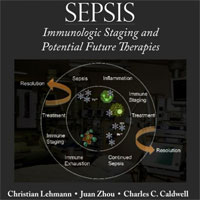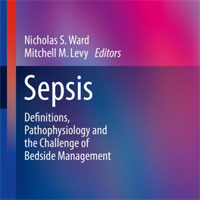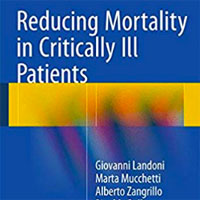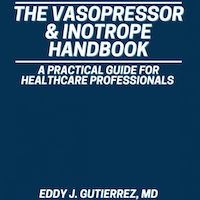Tag: septic shock
Quantifying the Burden of Viral Sepsis During the COVID-19 Pandemic and Beyond
Coronavirus disease 2019 (COVID-19), the disease caused by severe acute respiratory syndrome coronavirus 2 (SARS-CoV-2), has resulted in millions of deaths worldwide and countless more admissions to hospitals and ICUs. Since... read more
Respiratory Drive in Sepsis and Septic Shock Patients: Modulation by High-flow Nasal Cannula
Patients with sepsis and septic shock of extrapulmonary origin present elevated respiratory drive and effort, which can be effectively reduced by high-flow nasal cannula. 25 nonintubated patients with extrapulmonary sepsis... read more
Descriptors of Sepsis Using the Sepsis-3 Criteria
We successfully operationalized the Sepsis-3 criteria to an electronic health record dataset to describe the characteristics of critical care patients with sepsis. This may facilitate sepsis research using electronic health... read more
Vasopressor Initiation within 1 Hour of Fluid Loading is Associated with Increased Mortality in Septic Shock Patients
Vasopressor initiation within 1 hour of fluid loading was associated with higher 28-day mortality in patients with septic shock. The median time from the initial fluid bolus to vasopressor was shorter in the early group... read more
Outcome After Intubation for Septic Shock with Respiratory Distress and Hemodynamic Compromise
Intubation within 24 h of sepsis was not associated with hospital mortality but resulted in fewer 28-day hospital-free days. Although intubation remains a high-risk procedure, we did not identify an increased risk in mortality... read more
Predict Sepsis-Associated Vasopressor Use in the ICU
Domain adaptation improved performance of a model predicting sepsis-associated vasopressor use during external validation. 40 retrospectively collected features from the electronic medical records of adult ICU patients... read more
Burden of Post-Sepsis Morbidity Higher Than Previously Thought
A recent cohort study published in JAMA based on data from 116,507 survivors of hospital-treated sepsis in Germany sheds light on the heavy burden of long-term effects of sepsis, the most severe complication of infections. The... read more
Effect of Adjunctive Vitamin C, Glucocorticoids, and Vitamin B1 on Sepsis
We aimed to compare the effects of vitamin C, glucocorticoids, vitamin B1, combinations of these drugs, and placebo or usual care on longer-term mortality in adults with sepsis or septic shock. MEDLINE, Embase, CENTRAL, ClinicalTrials.gov... read more
Can Early Cytokine Profile Discriminate Between GPB and GNB?
Sepsis is a principal cause of death in critical care units worldwide and consumes considerable healthcare resources. The aim of our study was to determine whether the early cytokine profile can discriminate between Gram-positive... read more
Difference in Sepsis Patients Outcomes Between First and Second-Hit Infections
Our study identifies a fundamental difference in patient outcomes between first-hit and second-hit bacterial infections, which may be due to genetic, microbiological, immunological, and environmental factors. This finding... read more
Emerging Advances have the Potential to Change the Future of Sepsis Care
In recent years, many advances in the sepsis literature have occurred, including new definitions, changes to the Surviving Sepsis Campaign (SSC) bundles, new pharmacologic agents, and adjunct treatments. There are also... read more
Timing of Antibiotic Therapy in the ICU
Severe or life threatening infections are common among patients in the intensive care unit (ICU). Most infections in the ICU are bacterial or fungal in origin and require antimicrobial therapy for clinical resolution. Antibiotics... read more
Dynamic and Hybrid Configurations for ECMO
Dynamic or hybrid configurations for extracorporeal membrane oxygenation (ECMO) are needed when patient physiology or clinical conditions change. Dynamic configurations included configurations converting from veno-arterial... read more
Epidemiology of Intravenous Immune Globulin in Septic Shock
Intravenous immune globulin is used infrequently across the US in patients with septic shock. Regimens of IVIG in septic shock may be less intensive than those associated with a survival benefit in meta-analyses. Observed... read more
Higher ICU Sepsis Case Volume Associated with Significantly Lower Hospital Mortality
In this cohort study of 273,001 patients with sepsis at 231 ICUs in the UK, a higher annual sepsis case volume in the ICU was associated with significantly lower hospital mortality, and this association had no significant... read more
Factors Associated With Initiation of ECPR in the Pediatric Population
Although extracorporeal cardiopulmonary resuscitation (ECPR) is increasingly utilized in the pediatric critical care environment, our understanding regarding pediatric candidacy for ECPR remains unknown. Our objective... read more
ACEP Task Force on Septic Shock Should Replace the Surviving Sepsis Campaign
The critical care community has long been plagued by a series of antiquated, overbearing guidelines created by the Surviving Sepsis Campaign (SSC). The campaign was originally sponsored by Eli Lilly and Edwards Life Sciences,... read more
Prior Exposure to Angiotensin II Receptor Blockers in Patients With Septic Shock to Individualize Mean Arterial Pressure Target?
Our results suggest that patients with septic shock and chronic hypertension treated with angiotensin II receptor blocker may benefit from a high mean arterial pressure target to reduce the risk of acute kidney injury occurrence. We... read more
The Association of Platelet Decrease Following CRRT Initiation and Increased Rates of Secondary Infections
Platelet count drop by greater than 40% following continuous renal replacement therapy (CRRT) initiation is associated with an increased risk of secondary infection, particularly in patients with thrombocytopenia at the time... read more
Adjuvant therapeutic plasma exchange in septic shock
The hallmark of sepsis is a pathological host response to an infection that may lead to organ dysfunction, shock and high mortality. Besides numerous circulating mediators initiating inflammation, vascular barrier breakdown... read more
External Corroboration That Corticosteroids May Be Harmful to Septic Shock Endotype A Patients
This exploratory analysis provides further evidence that corticosteroid exposure may be associated with increased mortality among septic shock endotype A patients. We previously reported gene expression-based endotypes... read more
Early prediction of impending septic shock in children using age-adjusted Sepsis-3 criteria
Sepsis is a syndrome which afflicts both adults and children, with many disease courses and diverse outcomes. Understanding of sepsis pathophysiology has changed over time; the Sepsis-3 criteria define sepsis in adults as... read more









